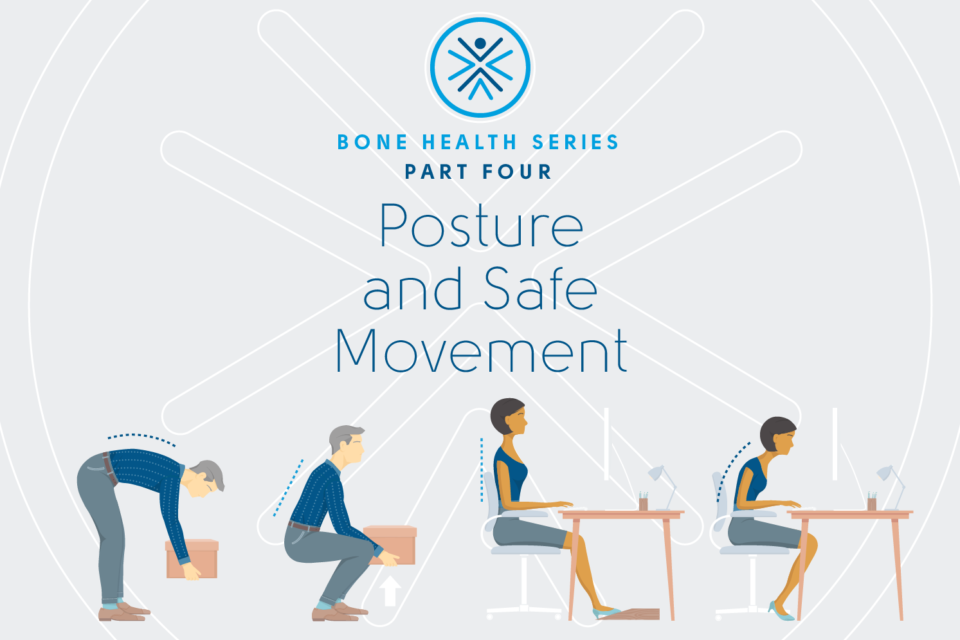Bone Health Series, Part Four of Four: Posture and Safe Movement
By: MJ Fegan, PT, DPT, GCS —
Good posture and correct body mechanics are important in all stages of life to allow for efficient use of musculature. When you have osteoporosis, it is even more important to encourage good posture and use correct body mechanics in order to limit the amount of abnormal stress on our bodies.
As we age, we see changes in our posture due to certain muscles tightening and others becoming weak. Osteoporosis can cause you to lose height because it affects the spinal bones. The bone loss causes the vertebrae to collapse affecting your posture which will cause you to hunch or stoop over.
Spinal fractures (breaks) are common with osteoporosis and may cause a loss in height either from a full compression fracture (where the entire vertebral body compresses) or from a wedge fracture (where the front of the vertebral body is compressed). With either of these fractures, the curve of the thoracic spine (mid back) increases and the natural curve in your lumbar spine (low back) decreases. This phenomenon results in your head, shoulders, and upper back being positioned more forwardly.
Curvature of the spine from osteoporosis as we age:
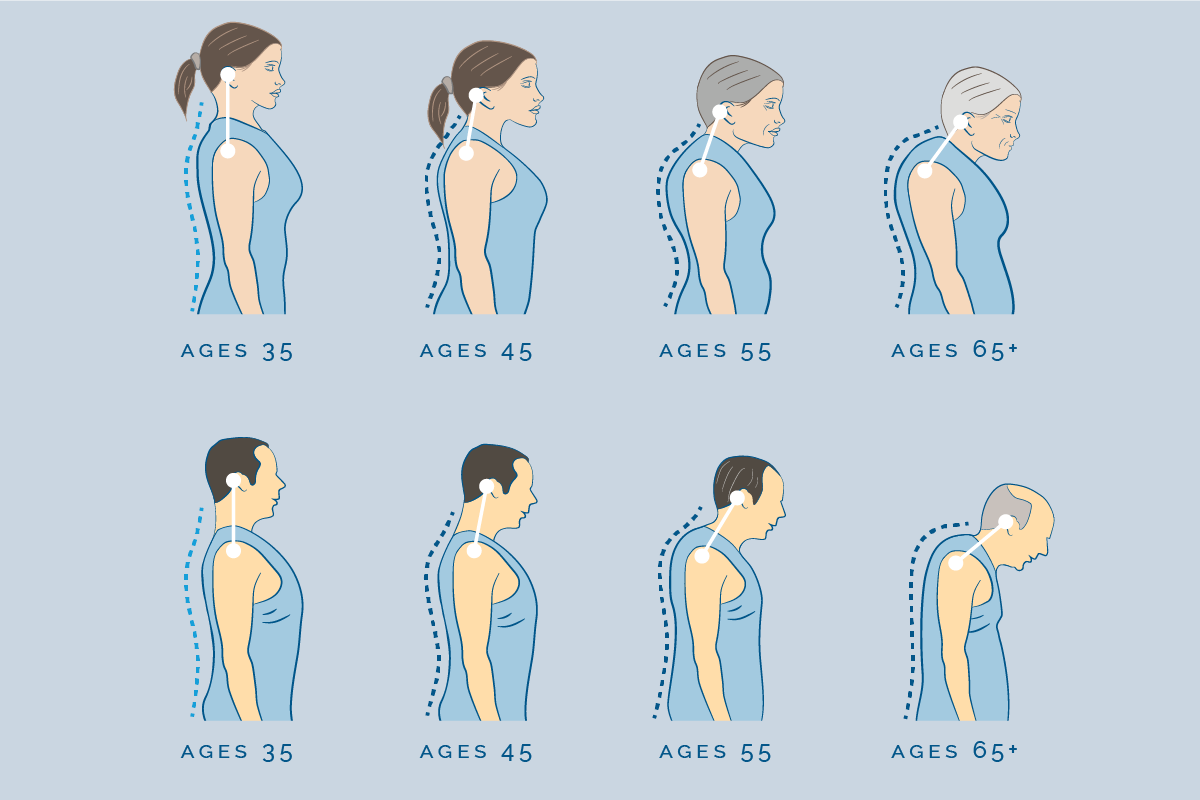
If you have osteoporosis, emphasizing proper posture and using correct body mechanics will help to limit the amount of stress on your spine and reduce the risk of injury and fracture. Studies have demonstrated that osteoporotic fractures are a significant cause of morbidity and mortality world-wide. One such study, by E. Hernlund et.al., published in “Archives of Osteoporosis 2013” found approximately 8.9 million fractures a year are caused by osteoporotic fracture. These fractures occur mainly at the hip, vertebrae, and distal forearm.
Correct body alignment:
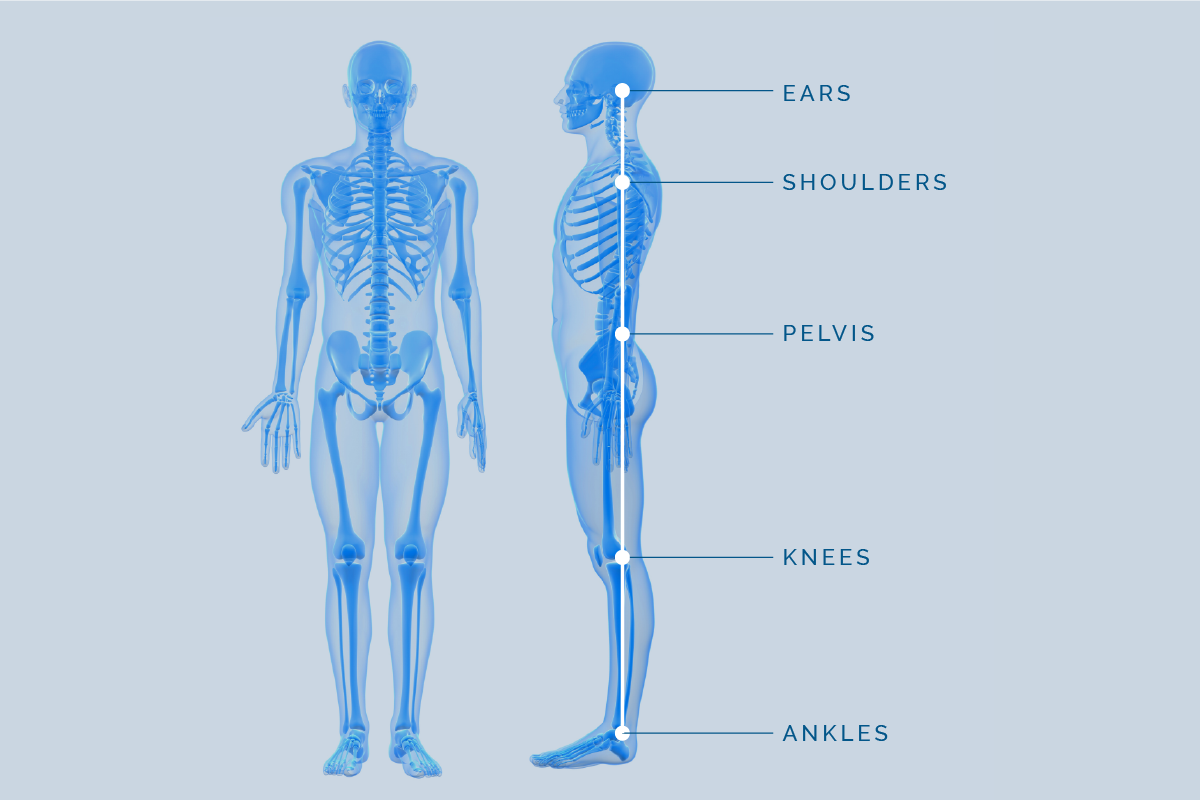
What exactly is proper posture?
Proper posture is the position of your body that keeps bones and joints in the alignment where the least strain is placed on supporting muscles and ligaments with movement. Proper alignment of the body is having ears, shoulders, hips, knees and ankles in line with each other.
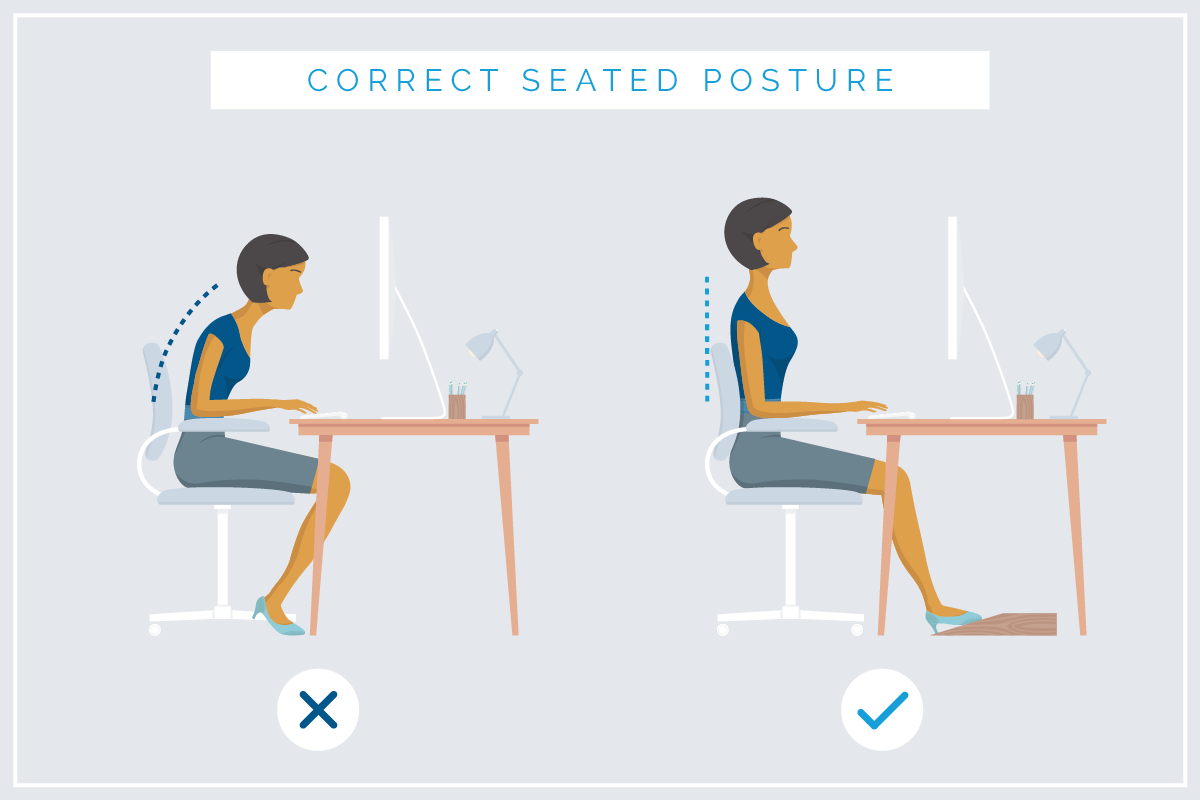
The use of proper body mechanics is also necessary in order to reduce the risk of injury to your spine. Proper body mechanics include:
- Do not bend forward instead bend with hip and knees while keeping your back straight.
- Do not slouch when sitting (See correct sitting posture above.)
- Avoid twisting your torso instead make sure to move your feet when you need to turn.
- When lifting objects bend your knees and keep your back straight.
- Avoid lifting objects above shoulder level and avoid reaching over your head to retrieve something from a high shelf or cupboard.
- Avoid activities that overload your spine when you are in a bent position, i.e., putting a roast in or out of the oven, putting wet laundry in the dryer.
- When exercising, avoid positions that cause bending or round ending in your spine (i.e., crunches, toe touches, seated rows, spinal twists) and any high impact exercises.
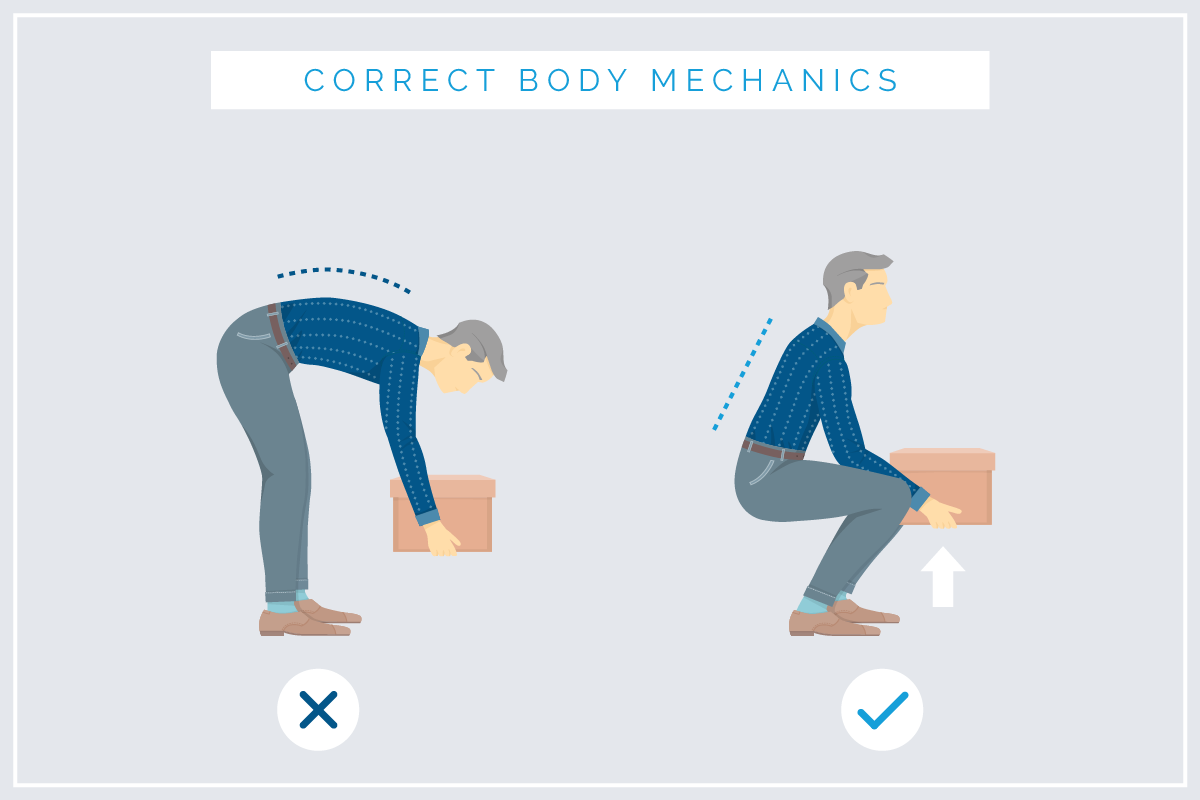
It is vital to practice proper posture and body mechanics at all times in order to promote a healthy spine and reduce the risk of injuries including fracture. Check out Part Two of this series, for specific exercises you can perform to improve your posture.
Remember you can affect bone health. It is possible to reduce the risk of osteoporosis and related injury by exercising, eating healthy, encouraging good posture and using correct body mechanics. Physical therapy can help educate you on appropriate exercise, healthy eating, proper posture and correct body mechanics for bone health.

